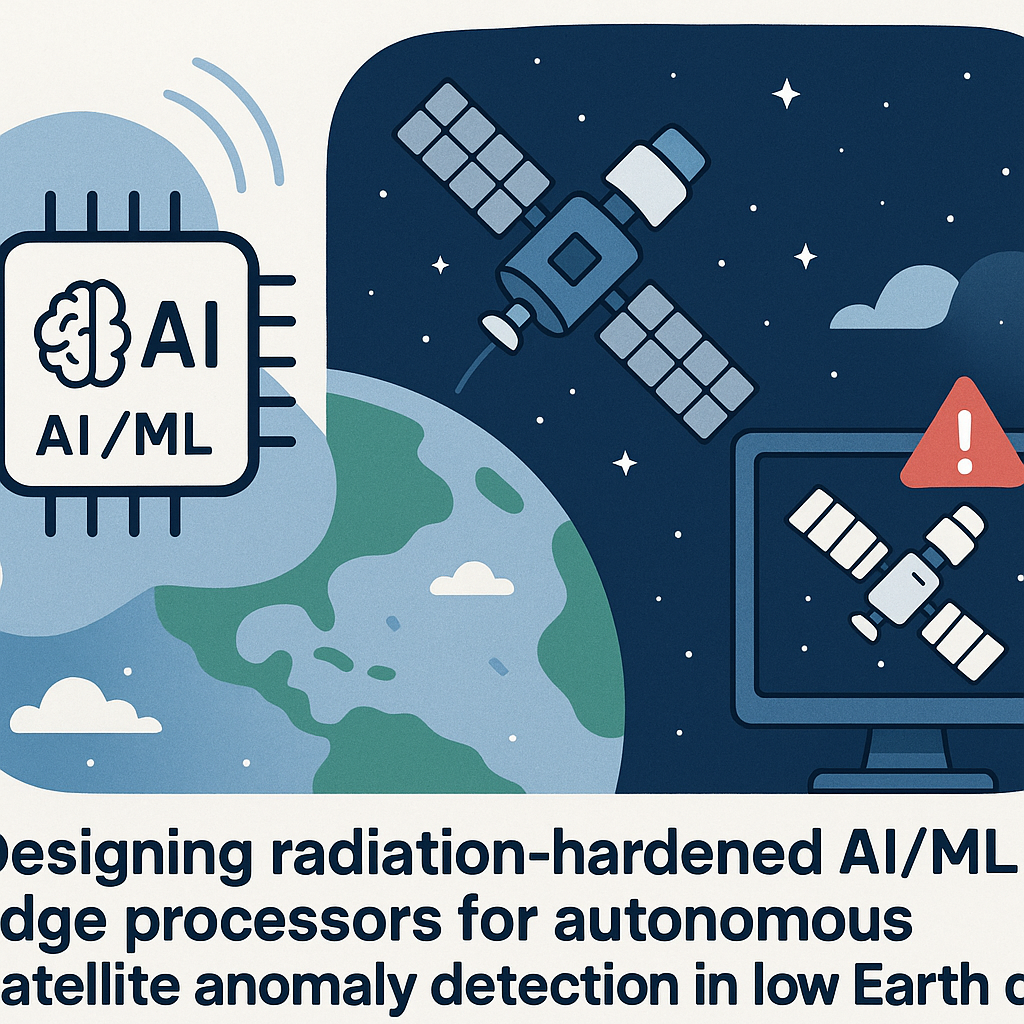Introduction
As satellite technology continues to evolve, the integration of artificial intelligence (AI) and machine learning (ML) into edge processors has become increasingly vital, especially for autonomous functions such as anomaly detection. In low Earth orbit (LEO), where satellites are exposed to various radiation environments, designing radiation-hardened processors is a critical challenge. This article explores the design considerations, methodologies, and benefits of developing resilient AI/ML edge processors tailored for satellite applications.
Understanding the Need for Radiation-Hardened Processors
Satellites operating in LEO are subjected to high levels of radiation from cosmic rays and solar particles. This radiation can lead to various issues, including:
- Bit Flips: Changes in data stored in memory can lead to system malfunctions.
- Software Errors: Code execution can be disrupted, causing anomalies in satellite operations.
- Component Degradation: Over time, radiation can physically damage electronic components.
To ensure the reliability and longevity of satellite systems, it is essential to design processors that can withstand these challenges.
Key Design Considerations for Radiation-Hardened AI/ML Processors
When designing radiation-hardened AI/ML edge processors for satellites, several key factors must be taken into account:
- Redundancy: Implementing redundant components can help mitigate the effects of radiation. Dual or triple modular redundancy (DMR/TMR) architectures are often employed to ensure fault tolerance.
- Error Detection and Correction (EDAC): Incorporating EDAC mechanisms can identify and correct errors in data storage and transmission, enhancing processor reliability.
- Radiation Shielding: Physical shielding using materials such as lead or specialized polymers can help protect sensitive components from direct radiation exposure.
- Low Power Consumption: Designing processors with low power requirements not only reduces heat generation but also minimizes the risk of thermal-induced failures.
- Optimized Algorithms: Tailoring AI/ML algorithms to be less compute-intensive can help reduce the processing load and improve resilience to radiation effects.
Methodologies for Developing Radiation-Hardened Processors
The development of radiation-hardened AI/ML processors involves various methodologies, including:
- Simulation and Modeling: Utilizing advanced simulation tools can help predict how components will behave under radiation exposure, allowing designers to make informed decisions early in the design process.
- Prototyping and Testing: Building prototypes and subjecting them to radiation testing can provide valuable insights into their performance and reliability in real-world conditions.
- Feedback Loops: Implementing a continuous feedback loop from testing to design can help refine and improve processor designs iteratively.
Applications of AI/ML Edge Processors in Satellite Anomaly Detection
AI/ML edge processors play a crucial role in enhancing the capabilities of satellites for anomaly detection. Some key applications include:
- Real-Time Data Analysis: These processors can analyze data from various sensors in real time, identifying anomalies that may indicate system malfunctions or external threats.
- Predictive Maintenance: By learning from historical data, AI/ML models can predict potential failures before they occur, allowing for timely maintenance and reducing downtime.
- Autonomous Decision Making: In the event of an anomaly, AI/ML processors can make autonomous decisions to mitigate risks, such as adjusting satellite orientation or initiating safe mode.
Challenges in Implementing Radiation-Hardened AI/ML Processors
Despite the advantages, several challenges must be addressed when implementing radiation-hardened AI/ML processors:
- Design Complexity: The integration of radiation-hardening techniques can complicate the design process, requiring expertise in both AI/ML and radiation effects.
- Cost Considerations: Developing radiation-hardened components often incurs higher costs due to specialized materials and testing requirements.
- Performance Trade-offs: Ensuring radiation resilience may require trade-offs in processing speed or efficiency, necessitating careful balancing.
Conclusion
Designing radiation-hardened AI/ML edge processors for autonomous satellite anomaly detection in low Earth orbit is a complex yet essential endeavor. By considering the unique challenges posed by radiation exposure and implementing robust design methodologies, engineers can create resilient processors that enhance the reliability and autonomy of satellite systems. As technology continues to progress, the integration of AI/ML into satellite operations will play a pivotal role in ensuring safer and more efficient space missions.



